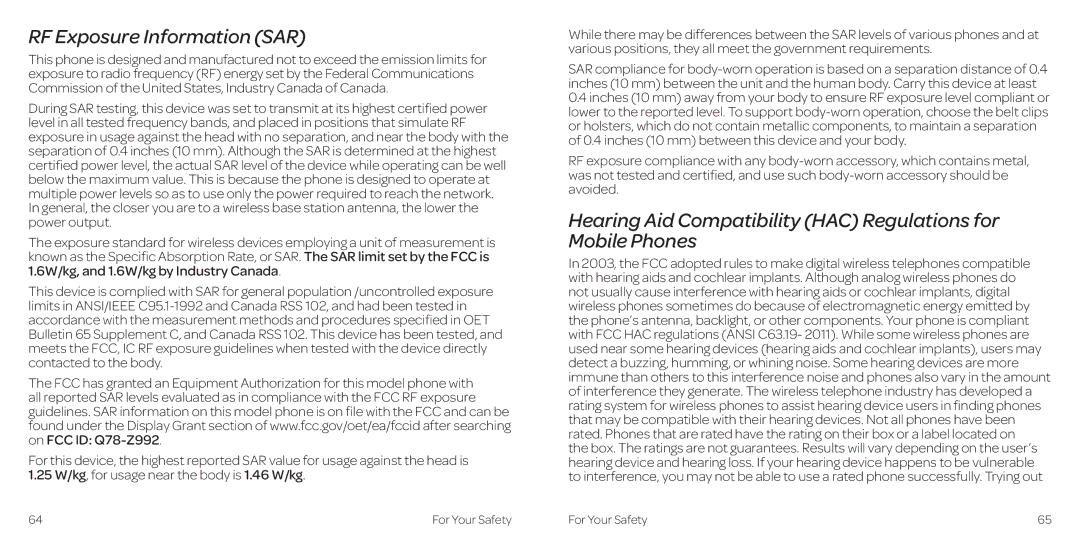RF Exposure Information (SAR)
This phone is designed and manufactured not to exceed the emission limits for exposure to radio frequency (RF) energy set by the Federal Communications Commission of the United States, Industry Canada of Canada..
During SAR testing, this device was set to transmit at its highest certified power level in all tested frequency bands, and placed in positions that simulate RF exposure in usage against the head with no separation, and near the body with the separation of 0..4 inches (10 mm).. Although the SAR is determined at the highest certified power level, the actual SAR level of the device while operating can be well below the maximum value.. This is because the phone is designed to operate at multiple power levels so as to use only the power required to reach the network.. In general, the closer you are to a wireless base station antenna, the lower the power output..
The exposure standard for wireless devices employing a unit of measurement is known as the Specific Absorption Rate, or SAR.. The SAR limit set by the FCC is 1.6W/kg, and 1.6W/kg by Industry Canada..
This device is complied with SAR for general population /uncontrolled exposure limits in ANSI/IEEE
The FCC has granted an Equipment Authorization for this model phone with all reported SAR levels evaluated as in compliance with the FCC RF exposure guidelines.. SAR information on this model phone is on file with the FCC and can be found under the Display Grant section of www..fcc..gov/oet/ea/fccid after searching on FCC ID:
For this device, the highest reported SAR value for usage against the head is 1.25 W/kg, for usage near the body is 1.46 W/kg..
While there may be differences between the SAR levels of various phones and at various positions, they all meet the government requirements..
SAR compliance for
RF exposure compliance with any
Hearing Aid Compatibility (HAC) Regulations for Mobile Phones
In 2003, the FCC adopted rules to make digital wireless telephones compatible with hearing aids and cochlear implants.. Although analog wireless phones do not usually cause interference with hearing aids or cochlear implants, digital wireless phones sometimes do because of electromagnetic energy emitted by the phone’s antenna, backlight, or other components.. Your phone is compliant with FCC HAC regulations (ANSI C63..19- 2011).. While some wireless phones are used near some hearing devices (hearing aids and cochlear implants), users may detect a buzzing, humming, or whining noise.. Some hearing devices are more immune than others to this interference noise and phones also vary in the amount of interference they generate.. The wireless telephone industry has developed a rating system for wireless phones to assist hearing device users in finding phones that may be compatible with their hearing devices.. Not all phones have been rated.. Phones that are rated have the rating on their box or a label located on
the box.. The ratings are not guarantees.. Results will vary depending on the user’s hearing device and hearing loss.. If your hearing device happens to be vulnerable to interference, you may not be able to use a rated phone successfully.. Trying out
64 | For Your Safety | For Your Safety | 65 |
